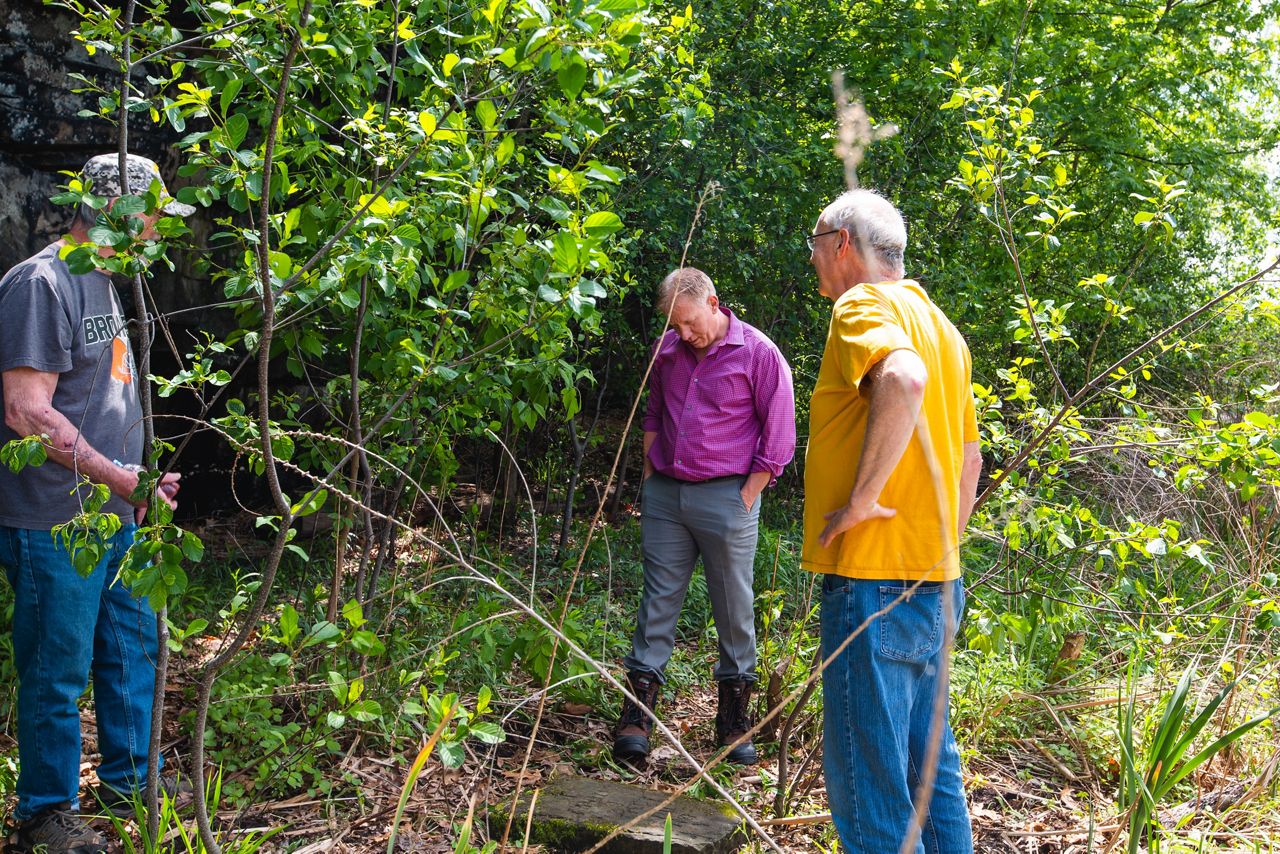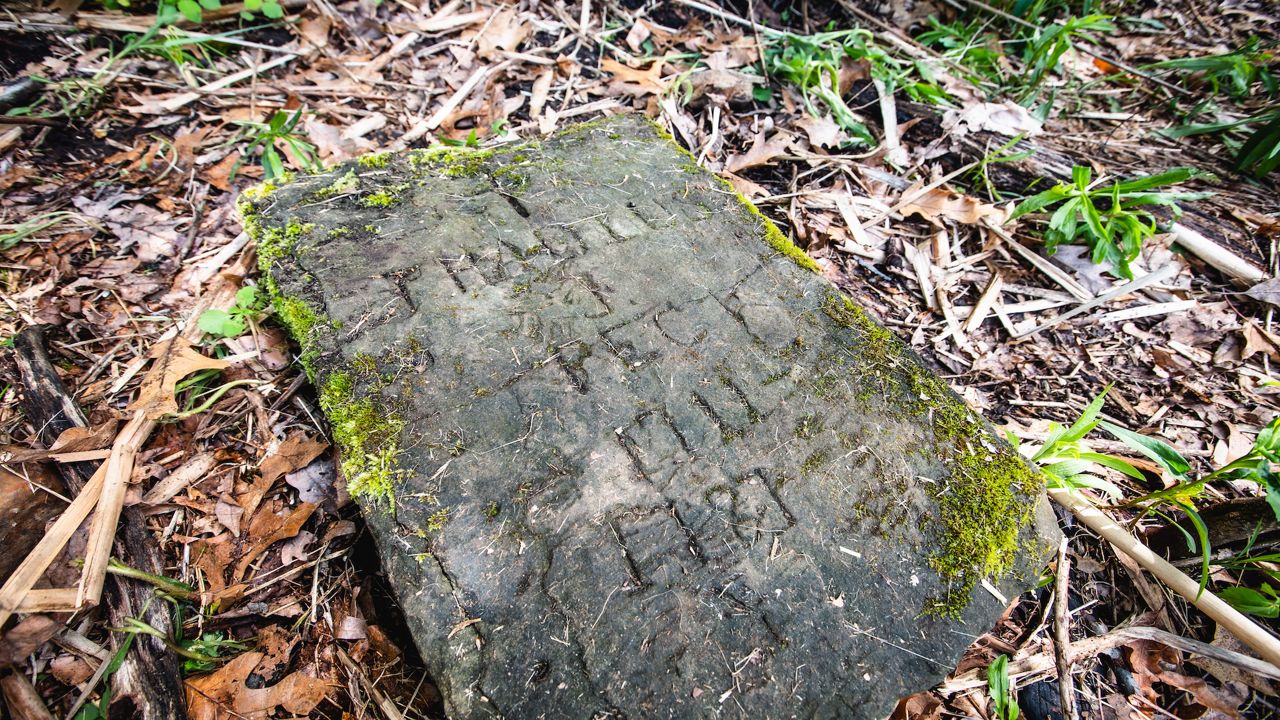CUYAHOGA FALLS, Ohio — A father and son walking the banks of the Cuyahoga River last month made a stunning discovery that has drawn the interest of historians, scholars and residents.
Cuyahoga Falls resident Richard Ryan and his son, John, who was visiting from Indiana, said they were reminiscing about fishing the river together, when they came upon a large, flat rock carved with a name and date: Thadius Peck 1711-1787.
Assuming the stone was a headstone or memorial marker, the men went to the Cuyahoga Falls Historical Society, which is run by volunteers two days a week.
“It was a Saturday and I just happened to be there,” said Shawn Andrews, an historical society researcher and board member.
The men told Andrews they had walked along that trail for the past 30 years, she said. When they noticed recent dam removal had caused the river to recede below the spot they used to fish, they climbed down to have a closer look.
“And that's how they found the stone,” she said.
Andrews knew the surname “Peck” was associated with founding families of this area, once was known as the Connecticut Western Reserve, she said.
But 1787 predated the founding of Cuyahoga Falls in 1812 and she knew most of the Western Reserve was just getting settled in the late 1700s.
So Andrews reached out to experts.
“I really engaged all these subject matter experts as quickly as I could,” she said. “And of course, you know, there's a lot of red tape you have to go through to make sure you're doing things correctly.”
She contacted the University of Akron, and was connected with Maeve Marino, historical archaeologist with Stewards of Historical Preservation, and John A. Peck, a geosciences professor.
Although little is known about the stone definitively, it does not mark a grave, at least not in that spot, Andrews said.
That’s because Peck and his team took sediment samples in that area in the past couple year when the two nearby dams were being removed, she said.
The researchers found that under about two feet of sediment is bedrock, Andrews said.

Krista Horrocks, a cemetery preservationist from the Ohio Historic Connection, was also asked to weigh in on the stone.
“If it is authentic, it’s likely one of the oldest gravestones in the state,” Horrocks said.
But unless Thadius Peck can be tracked down in historic texts, no one can be certain the stone represents someone who actually lived in this area, she said.
The spelling of the name “Thadius” is not the traditional spelling of that time period, she said, and the inscription on the stone is also unusual.
Most tombstones of that time listed age and date of death — not birth date, she said.
“There are little clues in history to help us solve the mystery because generally, most of Ohio was not settled at that time. Very few people were there in the 1780s,” she said. “It was a dangerous place to be back then.”
Mayor Don Walters said in a release he has always been interested in the city's founding.
“I am hopeful that this discovery can shed additional light on who once occupied the area that is now our city and when,” he said.
The City of Cuyahoga Falls reached out to the Army Corps of Engineers to find out whether the stone could be removed. With no permission needed, the Cuyahoga Falls Fire Department removed the stone from the banks.
To enable the community to view the stone, it will be on display during an open house from 2 p.m. to 4 p.m., Sunday, June 12 at the Cuyahoga Falls Historical Society & Museum, 2083 Cook St. in Cuyahoga Falls.



